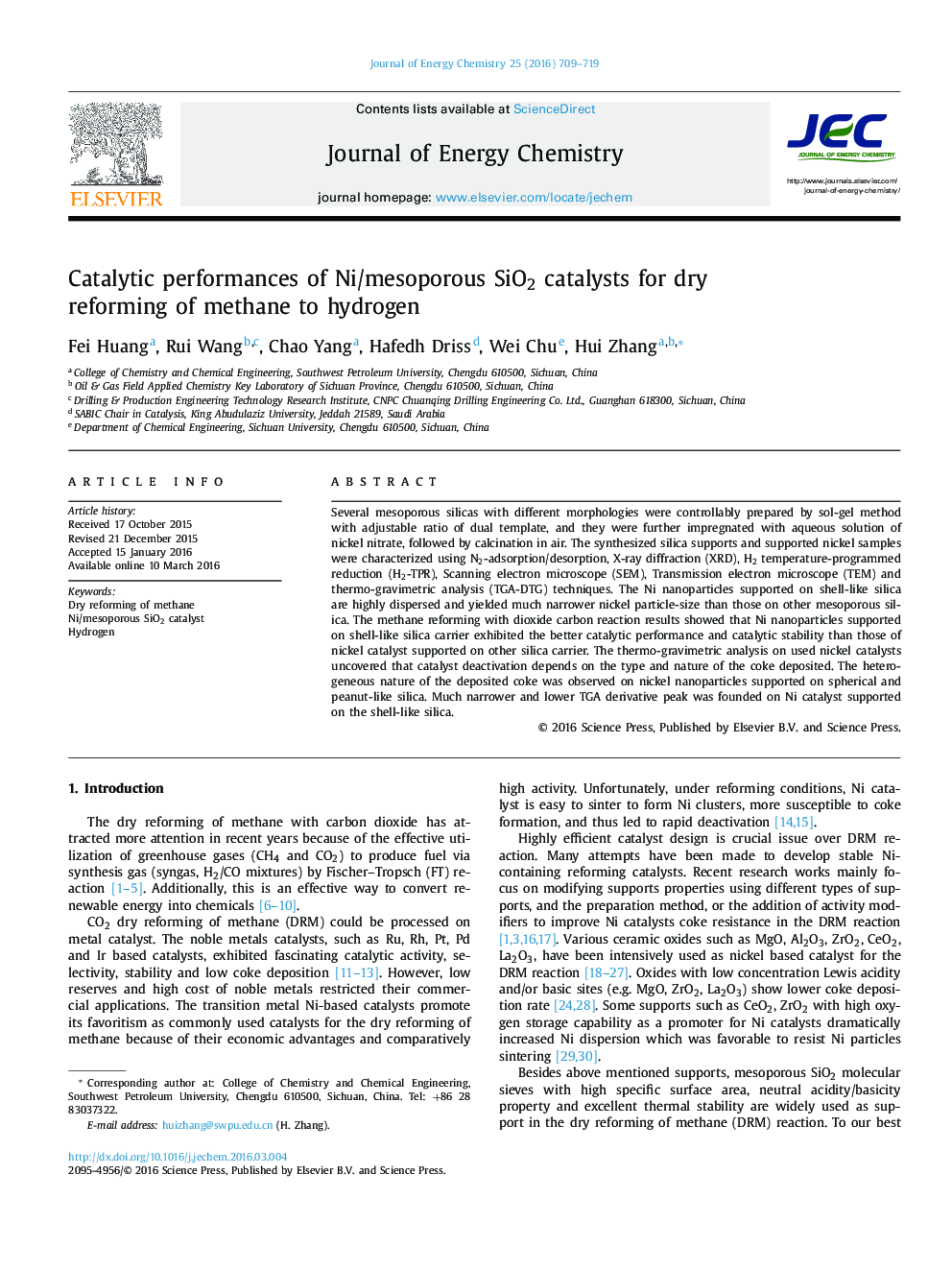| Article ID | Journal | Published Year | Pages | File Type |
|---|---|---|---|---|
| 63675 | Journal of Energy Chemistry | 2016 | 11 Pages |
Several mesoporous silicas with different morphologies were controllably prepared by sol-gel method with adjustable ratio of dual template, and they were further impregnated with aqueous solution of nickel nitrate, followed by calcination in air. The synthesized silica supports and supported nickel samples were characterized using N2-adsorption/desorption, X-ray diffraction (XRD), H2 temperature-programmed reduction (H2-TPR), Scanning electron microscope (SEM), Transmission electron microscope (TEM) and thermo-gravimetric analysis (TGA-DTG) techniques. The Ni nanoparticles supported on shell-like silica are highly dispersed and yielded much narrower nickel particle-size than those on other mesoporous silica. The methane reforming with dioxide carbon reaction results showed that Ni nanoparticles supported on shell-like silica carrier exhibited the better catalytic performance and catalytic stability than those of nickel catalyst supported on other silica carrier. The thermo-gravimetric analysis on used nickel catalysts uncovered that catalyst deactivation depends on the type and nature of the coke deposited. The heterogeneous nature of the deposited coke was observed on nickel nanoparticles supported on spherical and peanut-like silica. Much narrower and lower TGA derivative peak was founded on Ni catalyst supported on the shell-like silica.
Graphical abstractThe Ni nanoparticles supported on shell-like silica were highly dispersed and yielded much narrower NPs distribution, and better catalytic performance than those on the other mesoporous silica.Figure optionsDownload full-size imageDownload as PowerPoint slide
